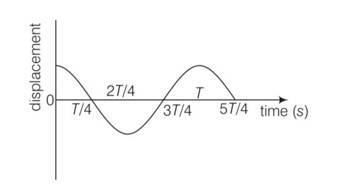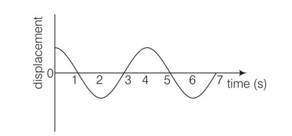Physics NCERT Exemplar Solutions Class 11th Chapter Fourteen
Get insights from 42 questions on Physics NCERT Exemplar Solutions Class 11th Chapter Fourteen, answered by students, alumni, and experts. You may also ask and answer any question you like about Physics NCERT Exemplar Solutions Class 11th Chapter Fourteen
Follow Ask QuestionQuestions
Discussions
Active Users
Followers
New answer posted
4 months agoContributor-Level 10
This is a multiple choice answer as classified in NCERT Exemplar
(a, c, d) a) when the particle is 3 cm away from A going towards B, velocity is towards AB.i.e positive. SHM towards mean position so positive.
b) When the particle is at C velocity is towards B hence positive.
c) When the particle is 4 cm away from B is going towards A velocity is negative and acceleration towards mean position. Hence negative.
d) Acceleration is always towards mean position O. when the particle is at B acceleration and force are towards BA that is negative.
New answer posted
4 months agoContributor-Level 10
This is a multiple choice answer as classified in NCERT Exemplar
(a, b, d) a) total mechanical energy of the body at any time t is
E= w2a2
KE=1/2mv2=
Kmax= ½ mw2a2=E
b) K= ½ mw2a2cos2wt
for a cycle value of coswt is =1/2
= 1/4 mw2a2= kmax/2
c) v=dx/dt = a coswt
Vmaen =Vmax+Vmin/2
= aw-aw/2=0
d)Vrms=
Vrms=Vmax/
New answer posted
4 months agoContributor-Level 10
This is a multiple choice answer as classified in NCERT Exemplar
(a, b, c) At t= 3T/4, the displacement of the particle is zero. Hence particle executing SHM will be at mean position i.e x=0 acceleration is zero and force is also zero.
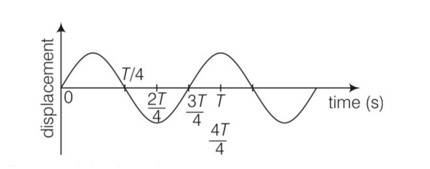
At t= 4T/3, displacement is maximum i.e extreme position, so acceleration is maximum
At t = T/4 corresponds to mean position, so velocity will be maximum at this position.
At t= T/2 corresponds to extreme position so KE =0 and PE =maximum.
New answer posted
4 months agoContributor-Level 10
This is a multiple choice answer as classified in NCERT Exemplar
(a, b, d) x=asinwt
V=dx/dt=awcoswt
A=dv/dt=-aw2sinwt
Force = mass = -mw2x
So force is directly proportional to displacement.
New answer posted
4 months agoContributor-Level 10
This is a multiple choice answer as classified in NCERT Exemplar
(b), (d) It is clear the curve that points corresponding to t=2s and t=6s are separated by a distance belongs to one time period. hence these points must be in same phase
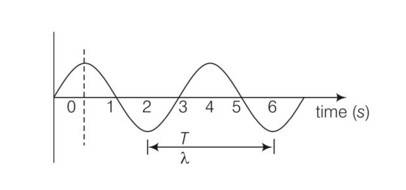
Similarly points belongs t-1s to t=5sare at separation of one time period. Hence must be in phase.
New answer posted
4 months agoContributor-Level 10
This is a multiple choice answer as classified in NCERT Exemplar
(a), (c) consider the motion of a ball inside a smooth curved bowl
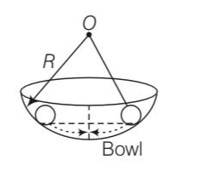
for small angular displacement or slightly released motion, it can be considered as angular SHM.
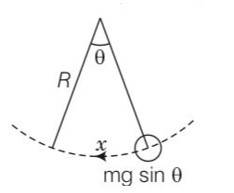
When the ball is at angle of the restoring force acts
Ma=mgsin
A= gsin
Hence motion is SHM
So T=
New answer posted
4 months agoContributor-Level 10
This is a multiple choice answer as classified in NCERT Exemplar
(a), (c) the rotation of earth about its axis is periodic because it repeats after a regular interval of time.
The rotation of earth is obviously not a to and fro type of motion about a fixed point. So its motion is SHM.
New answer posted
4 months agoContributor-Level 10
This is a multiple choice answer as classified in NCERT Exemplar
(b) Keq= K1+K2

Time period of oscillation of the spring block system
T=2
Frequency = 1/time = = equivalent oscillation frequency
When the mass is connected to the springs individually
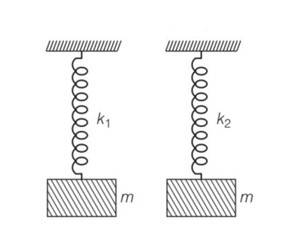
From above equation
So
New answer posted
4 months agoContributor-Level 10
This is a multiple choice answer as classified in NCERT Exemplar
(a) V=dy/dt=awcoswt
Vmax=aw=30
Acceleration A=
A=w2a=60
So after solving w =2rad/s
2
T=
New answer posted
4 months agoContributor-Level 10
This is a multiple choice answer as classified in NCERT Exemplar
(c) x=acos ( )2, so it is SHM motion.
X (t+T)=acos [ ]2
= acos [ ]
So it is not periodic.
So it is oscillatory but not periodic
Taking an Exam? Selecting a College?
Get authentic answers from experts, students and alumni that you won't find anywhere else
Sign Up on ShikshaOn Shiksha, get access to
- 65k Colleges
- 1.2k Exams
- 686k Reviews
- 1800k Answers


